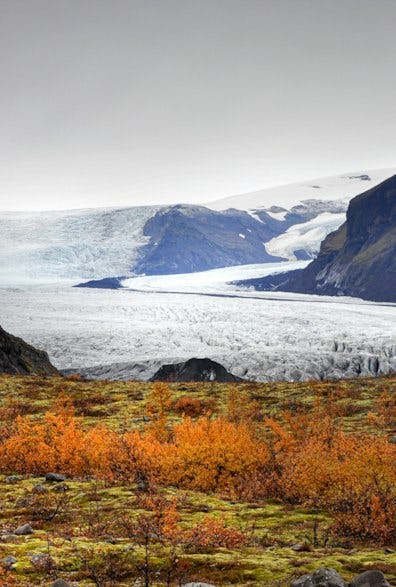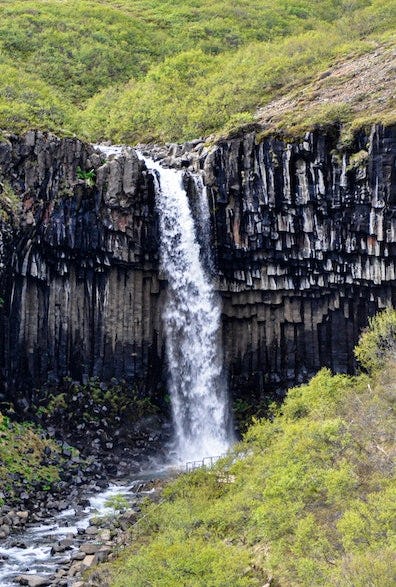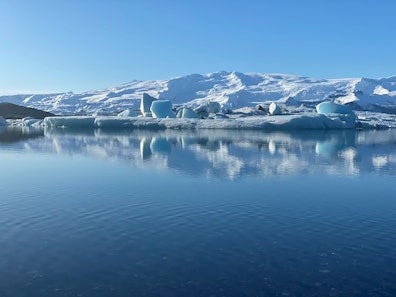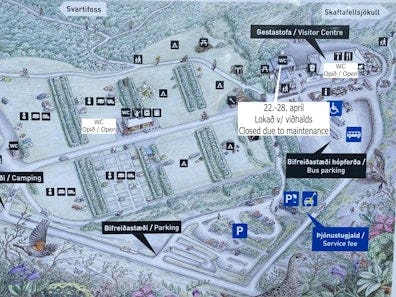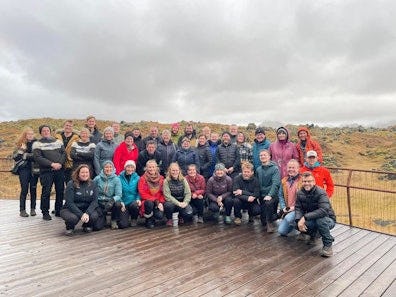Skaftafell

About Skaftafell
- Come visit
About Skaftafell
- Come visit
Part of the area around Skaftafell was formally declared a national park in 1967, and since 2008 has been part of Vatnajökull National Park. Natural beauty, favourable weather conditions, and a selection of hiking trails make Skaftafell an ideal destination for those who like to enjoy outdoor activities in Icelandic nature. There's a trail for everyone at every skill level. Short and easy trails lead to the waterfall Svartifoss and the glacier Skaftafellsjökull, but for those who want to venture further out, the Morsárdalur valley and Kristínartindar mountain peaks are perfect in terms of distance and effort. By the mountain Sandfell in Öræfi is Háalda, a mountain that was declared a national monument in 1975. A hiking trail that leads to the country's highest peak, Hvannadalshnjúkur, begins at Háalda.
Accessibility and services
Skaftafell is easily accessible along Route 1. The closest population centres are Kirkjubæjarklaustur 70 kilometres to the west and Höfn, 130 kilometres to the east. The region is accessible year-round, weather and road conditions permitting. Outside of the summer months, conditions can change rapidly. It is therefore important to inform yourself before visiting. Skaftafell is a hiker's paradise and everyone should be able to find a trail suitable to their skill level. There's an excellent campsite in Skaftafell that is open year-round. Flush toilets are available in the area as well as a variety of seasonal tourism services and privately operated restaurants.

Interpretation and information
Park rangers are responsible for supervision, information and educational services in the region year-round. There is a long and rich tradition of organised educational programmes presented by Skaftafell park rangers during the summer. The Skaftafellsstofa Visitor Centre is open year-round. In front of Skaftafellsstofa is an education centre that aims to provide reliable information about the region and educate visitors about the unique interplay of humans and nature in Skaftafell and the human impact on climate change and the environment. There are three visitors' paths in Skaftafell with information about the nature and culture of the region. Information about the summer educational programme becomes available as summer draws near.
Vatnajökull National Park's interpretation program is valid during the summer, offering a variety of hikes throughout the national park. You can find out about the summer's educational walks in the southern area of the national park by clicking on the link.

Skaftafellsstofa Visitor Centre
The visitor centre in Skaftafell is open all year. Rangers and service representatives educate and inform visitors about Skaftafell's natural features, hiking trails, accommodation and recreational options in the nearby area. There is also has a souvenir shop with books, postcards, etc. and a special emphasis on Icelandic products and items related to the local area.


Skaftafell campsite
There has been a campsite in Skaftafell since the early days of Skaftafell National Park. During the first years, visitors camped up on the slopes near the farm Bölti. The glacial soil deposits at the foot of the hill were soon revegetated, and have been the site of a large and spacious campsite since 1974. Today there are spots for motor homes, campers and tents as well as a variety of services available year-round.
Nature & history
- learn & discover
Nature & history
- learn & discover
The landscape at Skaftafell has been shaped by the erosive power of glaciers and water. Outlet glaciers characterise the area and the rivers Skeiðará, Morsá and Skaftafellsá issue from glaciers with the same names. The Skeiðará river is the largest of the three and was a presented a major obstacle to travel until a bridge was built in 1974. Skeiðará is most known for the Skeiðarárhlaup outburst floods that originated in the Grímsvötn lakes, caused by either volcanic activity or geothermal heat. In 1362, the volcano under Öræfajökull erupted in the largest pumice eruption in Iceland's recorded history, destroying the settlement in the Öræfi region. The area was given the name Öræfi (wasteland, wilderness) after the eruption. It was previously known as Litla Hérað (little county). The volcano erupted again in 1727.


Pleasant weather and abundance
The climate in Skaftafell is extremely hospitable and the weather can often be much better there in the shelter of the Öræfajökull glacier than in neighbouring areas. Vegetation is diverse in Skaftafell, the lower slopes are forested with birch, rowan trees grow here and there within the birch wood, and ground cover is robust. Birch trees grow taller in the Bæjarstaðarskógur forest than in most places in Iceland. Bluebells, yellow saxifrage and alpine rockfoil, all characteristic of Eastern Iceland, can be found all over Skaftafell. The variety of plant life has changed considerably in terms of both quantity and distribution after the national park was given protected status.
From home to world heritage
Skaftafell was a manor farm and a local assembly site in the Middle Ages. In early times, the estate was property of the church and later came under possession of the Danish monarchy. The farmstead covered a wide area of the land, spanning from the sea up to the middle of Vatnajökull. The ever increasing encroachment of the Skeiðará river destroyed the arable land on the plain, and in the middle of the 19th century, the farmers of Skaftafell moved their houses and farmland up to the slopes of Skaftafell. However, the steep incline was poorly suited to motorised agricultural equipment, and by the middle of the 20th century this fertile land was no longer as appropriate for farming as before. In 1960 it was proposed that Skaftafell be declared a national park. Skaftafell National Park was formally established on September 15th of 1967, and the farmer Ragnar Stefánsson from Hæðir in Skaftafell became the first park ranger. When Vatnajökull National Park was founded on June 7th, 2008, the national park in Skaftafell was assimilated by the new one. The region was registered as a UNESCO World Heritage Site in 2019.
